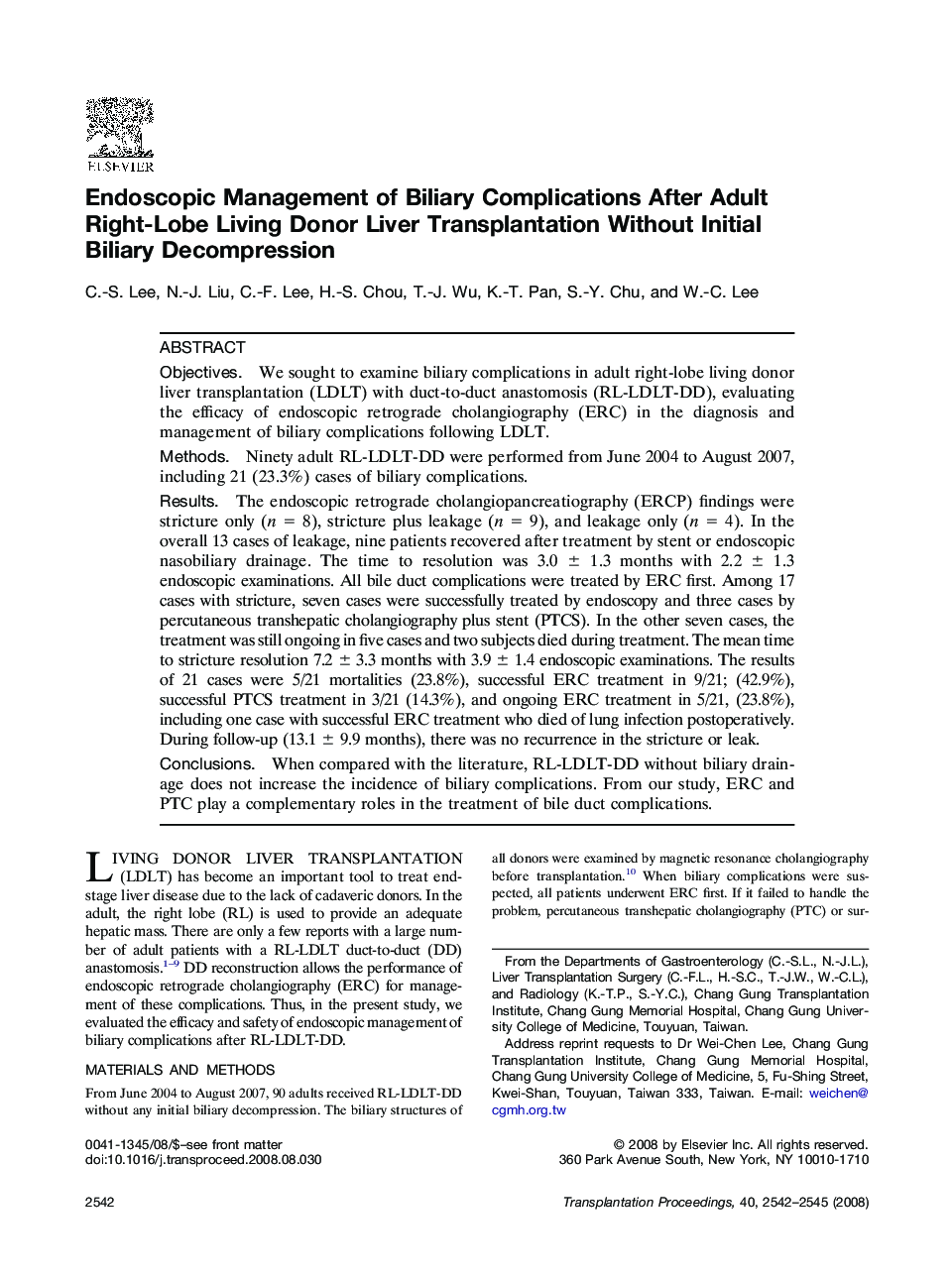| Article ID | Journal | Published Year | Pages | File Type |
|---|---|---|---|---|
| 4261991 | Transplantation Proceedings | 2008 | 4 Pages |
ObjectivesWe sought to examine biliary complications in adult right-lobe living donor liver transplantation (LDLT) with duct-to-duct anastomosis (RL-LDLT-DD), evaluating the efficacy of endoscopic retrograde cholangiography (ERC) in the diagnosis and management of biliary complications following LDLT.MethodsNinety adult RL-LDLT-DD were performed from June 2004 to August 2007, including 21 (23.3%) cases of biliary complications.ResultsThe endoscopic retrograde cholangiopancreatiography (ERCP) findings were stricture only (n = 8), stricture plus leakage (n = 9), and leakage only (n = 4). In the overall 13 cases of leakage, nine patients recovered after treatment by stent or endoscopic nasobiliary drainage. The time to resolution was 3.0 ± 1.3 months with 2.2 ± 1.3 endoscopic examinations. All bile duct complications were treated by ERC first. Among 17 cases with stricture, seven cases were successfully treated by endoscopy and three cases by percutaneous transhepatic cholangiography plus stent (PTCS). In the other seven cases, the treatment was still ongoing in five cases and two subjects died during treatment. The mean time to stricture resolution 7.2 ± 3.3 months with 3.9 ± 1.4 endoscopic examinations. The results of 21 cases were 5/21 mortalities (23.8%), successful ERC treatment in 9/21; (42.9%), successful PTCS treatment in 3/21 (14.3%), and ongoing ERC treatment in 5/21, (23.8%), including one case with successful ERC treatment who died of lung infection postoperatively. During follow-up (13.1 ± 9.9 months), there was no recurrence in the stricture or leak.ConclusionsWhen compared with the literature, RL-LDLT-DD without biliary drainage does not increase the incidence of biliary complications. From our study, ERC and PTC play a complementary roles in the treatment of bile duct complications.
